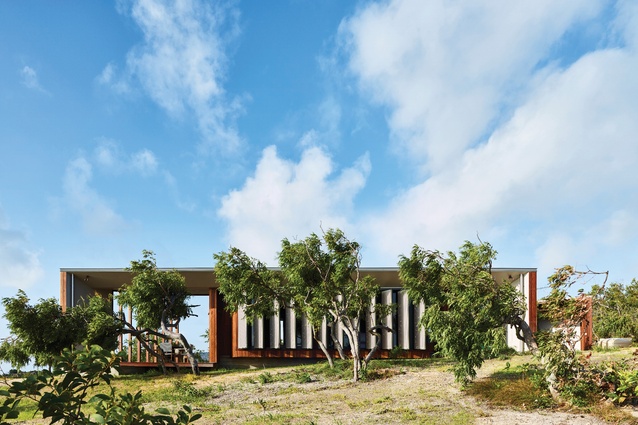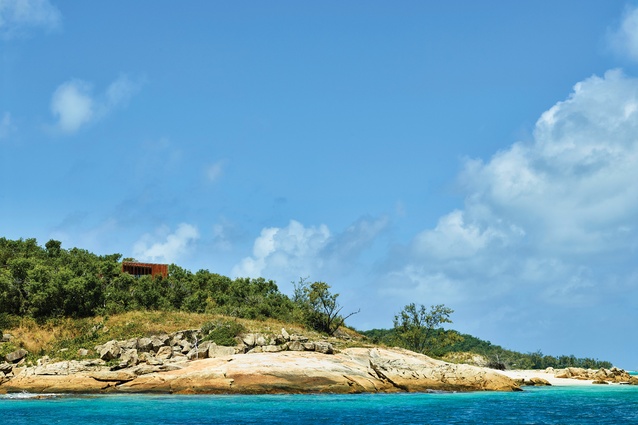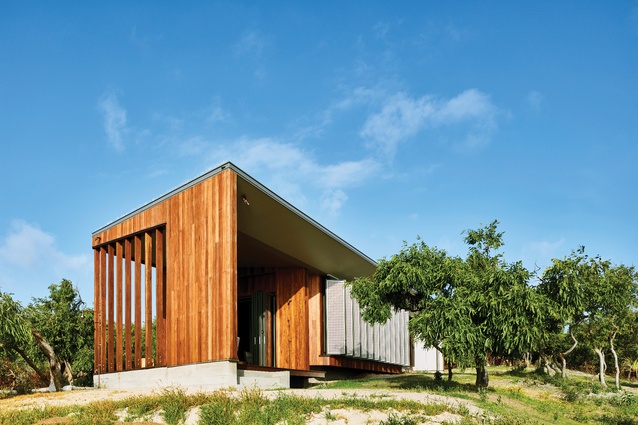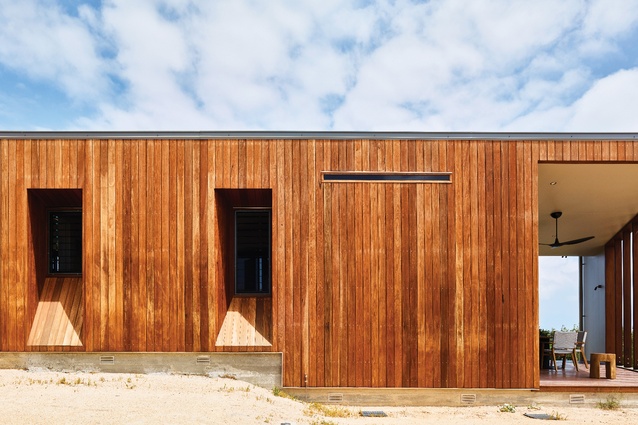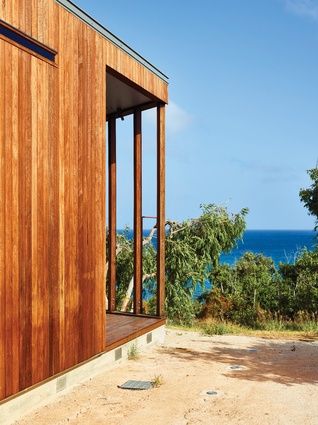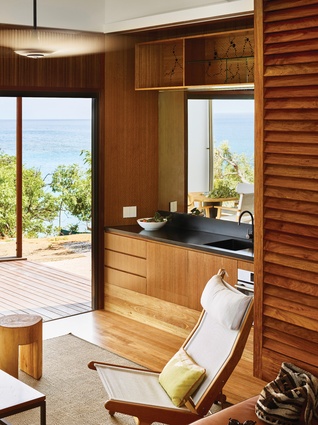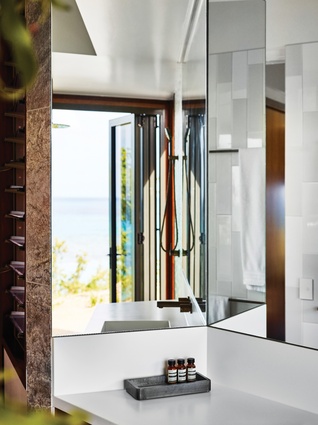Island ingenuity: Wilson’s Cottage
Located on an “thoroughly cinematic” island off the coast of Far North Queensland, this new cottage by James Davidson Architect sensitively and intelligently responds to its World Heritage-listed site.
I haven’t actually watched The Blue Lagoon, the 1980 romantic adventure film starring a very young Brooke Shields and Christopher Atkins. And yet, back at my desk daydreaming about my trip to Lizard Island to visit Wilson’s Cottage (and finding myself strangely lost for words to adequately describe the experience), the retro movie comes to mind.
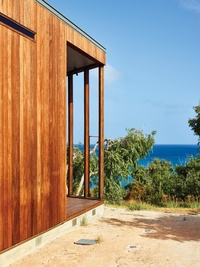
This hazy connection between the film and my trip isn’t just an attempt to define my encounter with an idyllic, tropical paradise. Rather, it resonates because Lizard Island is thoroughly cinematic, creating an elusive, idealized memory in the same way that a motion picture like The Blue Lagoon does.
Wilson’s Cottage by James Davidson Architect (JDA) is a bespoke architectural addition to this secluded and unspoilt island enclave off the coast of Far North Queensland. The landscape of Lizard Island is striking and rugged, with open grasslands thickening into scrubby woodlands that encircle pristine beaches and granite outcrops.
Lizard Island National Park, about 240 kilometres north of the city of Cairns, sits on the northern edge of the UNESCO World Heritage-listed Great Barrier Reef Marine Park. It is the largest of a group of four islands that rim a blue lagoon within the reef, which is the largest living structure on earth.
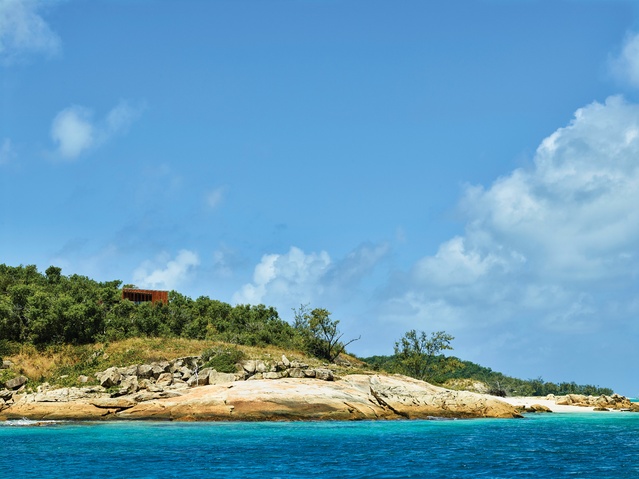
Lizard Island is known as Jiigurru to the Dingaal Aboriginal people of North Queensland – it is a sacred place that was used over tens of thousands of years for the initiation of young men and for the harvesting of shellfish, turtles, dugongs and fish. Captain James Cook renamed the island (for its plentiful lizard population) on the 1770 voyage of the HMS Endeavour.
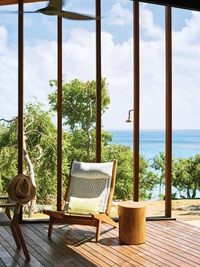
Its highest peak is the eponymous Cook’s Look, marking the spot from which Cook finally charted a course out to open sea through the maze of reefs. By the middle of the nineteenth century Lizard Island was yielding fishermen large quantities of bêche-de-mer (also known as sea cucumbers), which are a popular delicacy across Asia.
In the conceptualization of Wilson’s Cottage the first hurdle for the architects was designing how to build it, rather than what to build. JDA specializes in the design of remote and complex projects across the Asia-Pacific and, as James Davidson puts it, the practice relishes “the opportunity to turn potential problems into enjoyable challenges.”
At Lizard Island, James recalls coming up with the idea of floating a pontoon out onto the reef. “The barge pulled up onto the pontoon, and then we pulled the pontoon with all the building materials to the beach,” he says. From there they used a flying fox pulley system with a generator to lift the materials over the World Heritage site to the top of the hill.
The innovative construction techniques developed on Lizard Island by JDA, Laurie Lindner Constructions and KFB Engineers have already generated a bold proposal by JDA, in which traditional timber-and-tin Queenslander houses in flood-prone areas could rise up on pylons to float above increasing floodwaters. There’s a cute nod here to the improbable ingenuity of a “professor” from the small screen – one of the seven castaways in the 1960s sitcom Gilligan’s Island – whose tropical isle inventions included a battery charger fashioned out of coconut shells and seawater.

Lizard Island’s pristine environment presented JDA with a rare opportunity and the challenge of fulfilling clients Steve and Jane Wilson’s ambition to create the “best reef house in the world.” The new building is located on an off-the-grid 2,000-square-metre site adjacent to Lizard Island Resort, and is carefully nestled within the silhouette of the surrounding landscape.
On the approach from the pearlescent white sand of the beach below, toward the prow of the peninsula, the building seems to rise up suddenly to welcome visitors through a generous entry loggia. Over time this shiplap spotted gum outer shell will soften to the mottled-grey tones of the surrounding vegetation, further camouflaging the form.

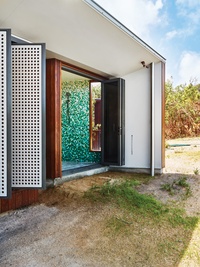
The building’s typology is that of the self-contained cabin, with the trapezoid-shaped plan divided into four distinct spaces – an outdoor room that frames extraordinary views across the Pacific Ocean, a built-in kitchen and living room with large panels of mirror that amplify the scale of the wider setting, a raised bedroom platform with bifold plantation shutters, and a colourful mosaic-tiled indoor/outdoor bathroom. JDA worked with Twofold Studio to create the interiors of this sophisticated home away from home.
Along the south-western facade perforated vertical louvres, which also act as cyclone shutters, ameliorate the effects of the harsh afternoon sun. The inside of these blades features an intriguing patterned artwork by Skye Peterson. By day these perforations and patterns animate the interior with moving shadows, while in the evening they create a glistening constellation, a beacon in the landscape signalling that the daytrip has come to a close and we are to bid goodnight to this very special part of the Australian landscape.

